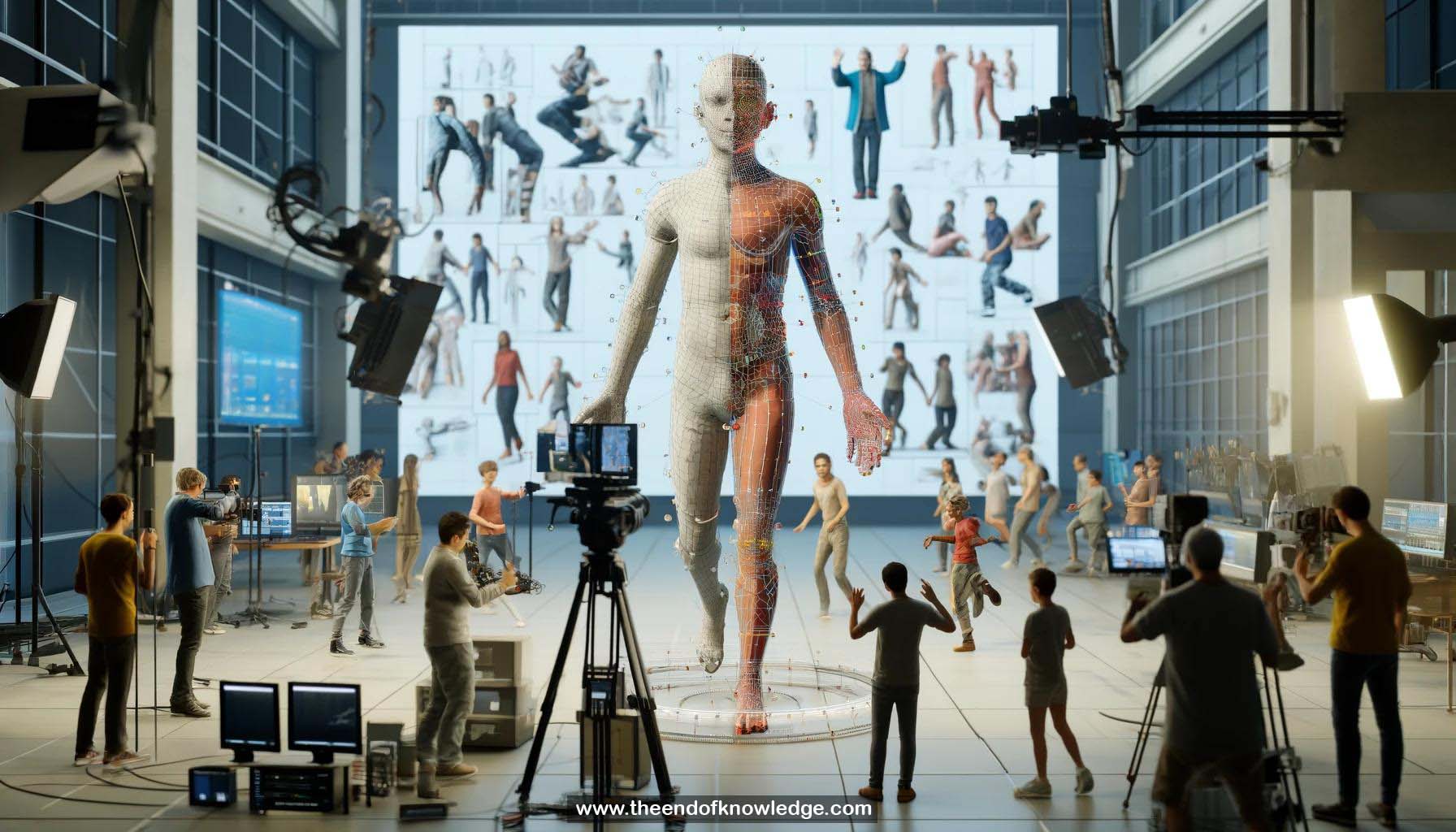 >
>
Concept Graph & Resume using Claude 3 Opus | Chat GPT4o | Llama 3:
Resume:
1.- Total capture: 3D deformation model for tracking faces, hands, and bodies simultaneously.
2.- Frank model: Created by stitching together individual part models into a single skeleton hierarchy.
3.- Adam model: Derived from Frank, enables total body motion capture with a simpler parameterization.
4.- Social communication: Transmitted by organized motion of the whole body, including facial expressions, hand gestures, and body posture.
5.- Existing systems: Focus on particular scales or parts, making it difficult to concurrently analyze full spectrum of social signaling.
6.- Body model: SMPL model with minor modifications, defined by shape, pose, and translation parameters.
7.- Face model: Generative PCA model built from FaceWarehouse dataset, combining shape and expression subspaces.
8.- Hand model: Artist-rigged mesh deformed via linear blend skinning, with scaling parameters for each bone.
9.- 3D keypoint detection: Used to fit the models, obtained by triangulation of 2D keypoint detections across multiple views.
10.- Iterative Closest Point (ICP): Used to match uncorresponded 3D points from multiview stereo reconstruction to the mesh models.
11.- Objective function: Includes anatomical keypoint, ICP, seam constraint, and prior costs to fit the models to data.
12.- Seam constraints: Encourage vertices around seam parts to be close, avoiding discontinuities between part models.
13.- Prior cost: Set over model parameters to avoid overfitting to noise in 3D point clouds and inconsistencies in joint locations.
14.- Capturing Adam dataset: 70 subjects performing short range of motion, reconstructed with Frank model to build Adam.
15.- Shape deformation space: PCA analysis on fitted surfaces warped to canonical pose captures variations across entire body.
16.- Total motion capture: Optimizes a cost function similar to Frank's, but with a unified set of parameters and no seam constraints.
17.- Quantitative evaluation: Measures overlap with ground truth silhouettes, comparing SMPL, Frank, and Adam models.
18.- Qualitative results: Demonstrates the method on various challenging sequences, showing more realism than SMPL alone.
19.- Markerless hand capture: Shows better localization quality than body and face capture in the results.
20.- Potential to outperform marker-based methods: Learning-based keypoint detectors can provide measurements for occluded parts.
Knowledge Vault built byDavid Vivancos 2024